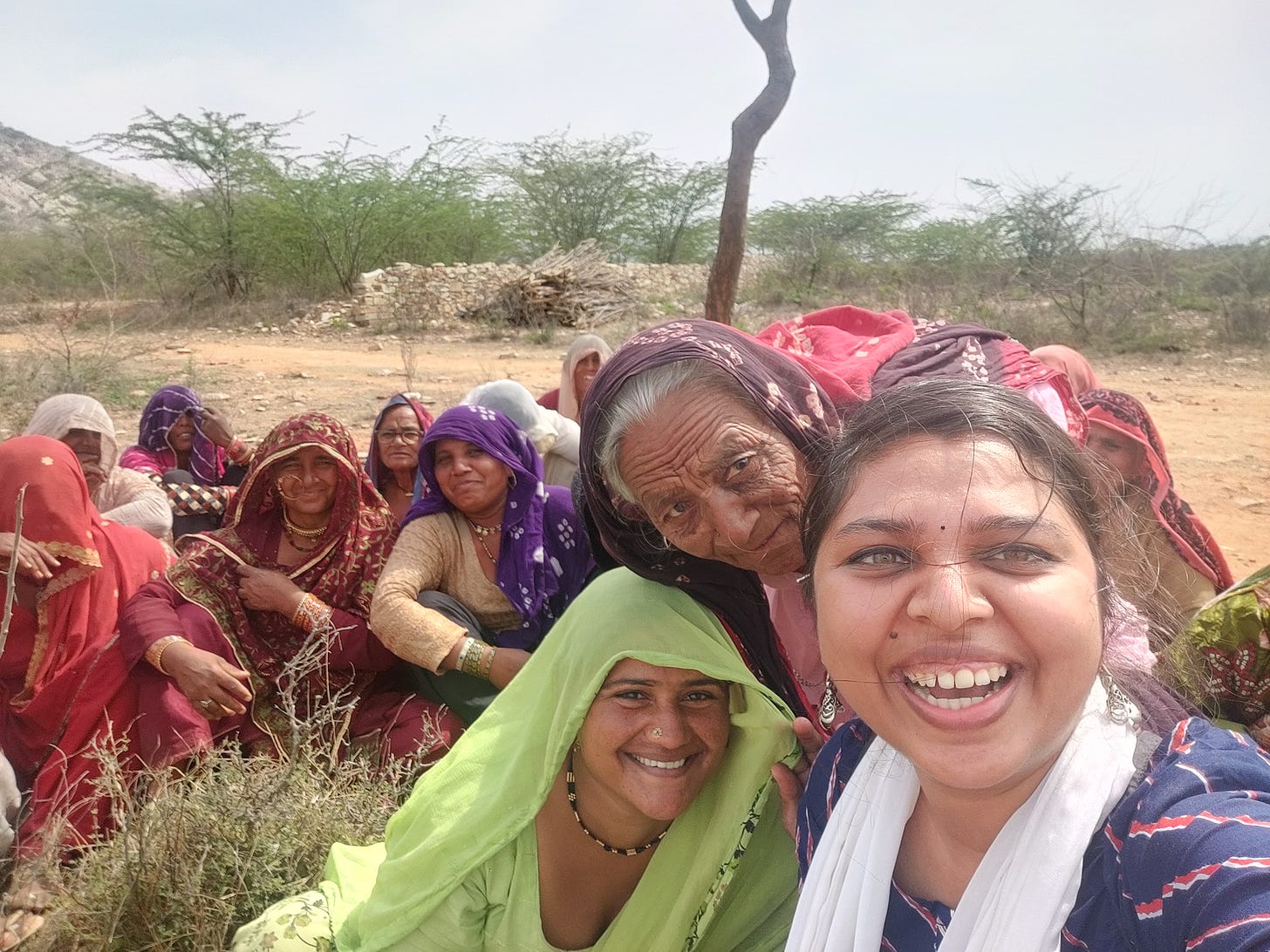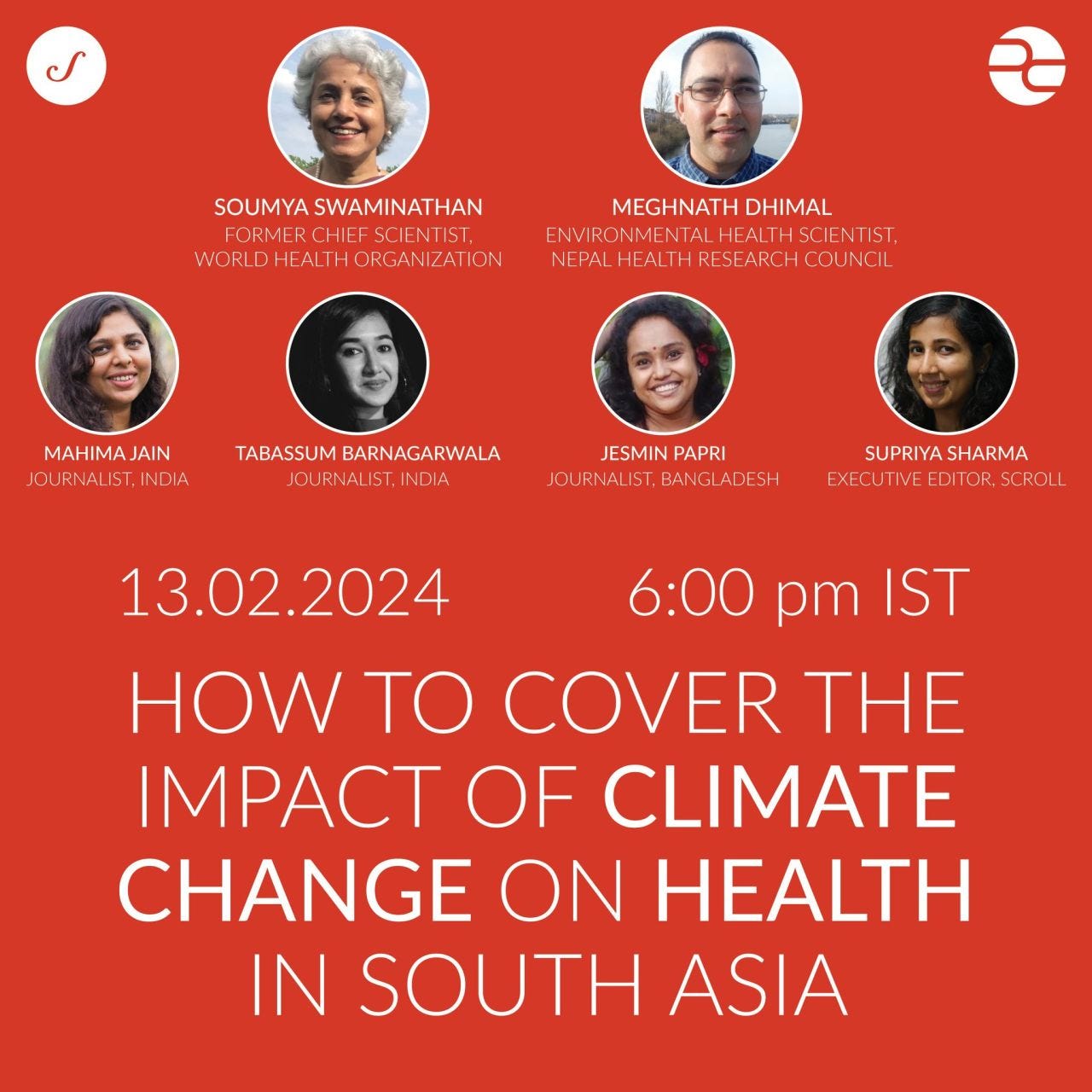FAQs on journalism grant applications
Journalism grants and fellowships have helped me do shoe-leather reporting, deep dives and experiment with story telling formats. TK #9 is FAQs on journalism grant applications
TK, short for “To Come,” in publishing and journalism is used by editors to mark missing information. This fortnightly newsletter is Mahima Jain’s repository of work to come: ideas and thoughts, reportage and stories, anecdotes and insights. I have shared TK#8 and TK #9 back-to-back, since I missed the two editions meant for January.
Welcome back to TK. I am Mahima Jain, a journalist currently based in Denmark and working on finding new ways to tell climate stories at the Constructive Institute and the Aarhus University. You can read about this project here.
Until a couple of weeks ago, I was a freelance journalist. I had the freedom to report from across India and to make that happen I relied largely on grants and fellowships. Here’s a near-complete list of grant-funded projects I have worked on (my website needs a redesign so bear with this for now). Grants and fellowships have helped me report from close to a dozen states in India, supported my travel to three countries, and fostered four collaborations, including one cross-border project.
With the preamble that I am no journo-influencer, here’s a how-to on going about applying for grants for journalism work. There’s little spoon-feeding here, loads of general advice and maybe a few tips. Also, my experience is limited to journalism story grants. Only a few of those have been large collaborative projects. I know nothing about academic grants, so please don’t ask me questions about that. Here goes:
Identify the grants that suit you: I’d be rich if I took a penny from everyone who asked me where you find these opportunities. Honestly, the answer is quite simple and something journalists should be familiar with: deep dives on Google, and social media networks. It takes a hell-a-lot of Googling, and even then you will miss some opportunities. There are also journalism newsletters, websites, and social media accounts that journalists should and can follow to keep updated about funding opportunities. To name a few: GIJN, Pulitzer Center, Earth Journalism Network, Reuters Institute, The SciCommer, Society of Environmental Journalists, International Women’s Media Foundation, and so on.
Understand your beat: Do some work on the broad theme you are planning to ask for funding for. Story grants are a great way to break into a new beat–I have Earth Journalism Network to thank for helping me start the second phase of my career as an environment journalist in 2018. But before I applied for my first grant, I built a bank of stories and projects to demonstrate my interests and passion. This wasn’t a conscious choice back then, but it helped.
Do you qualify?: Journalism grants most often do not require academic degrees, but there may be other criteria. For instance, grant opportunities are targeted at early-career, mid-career and senior journalists. Figure out what stage you are at. See if you fit the bill.
PS: Women often don’t apply for positions unless they are 100% qualified, here’s an HBR article on it. It’s not because of the lack of confidence, the author of this piece finds: “They just need better information about how hiring processes really work.”
There’s no free money: Grants are not no-strings-attached. You have to figure out how your work fits into a funding body’s mission and vision. Grant managers broadly know how and on what they want to spend their money on. So, this is a collaborative process. Your work might have to fit into what the grants body wants.
Honestly, I have seldom matched an idea to a grant body’s mission statement. But I have found that the issues grants want to work on don’t deviate a lot from what is in the news: misinformation, disinformation, AI, public health, climate change, female labour force participation, migration. These are some of the biggest issues affecting us for the last decade and have been the focus of most organisations.
Having said this, as an applicant you have to go beyond pitching “environment stories” to the Earth Journalism Network or “gender stories” to the International Women’s Media Foundation.
Rajasthan, March 2022, reporting on climate change and social protection schemes for women labourers with the support of the Population Reference Bureau. Story for Mongabay.
As journalists, it's our job to have an ear on the ground. I have often found that grant opportunities arise when there is a global interest in exploring deeper questions, tensions and problems that affect societies, communities and countries.
These can be stories that look at systems [Why are India’s survivors of gender-based violence ignored by the public health systems: my project for Pulitzer Center], or sweeping narratives [How climate change impacts migration and labour: Bhasker Tripathi’s project, or my project for IWMF Kim Wall Memorial Fund which will be out soon], or investigations [here’s a talk by EJN on “Following the money: Investigating illegal wildlife trade in East Africa”].
Not all stories need to be supported by grants or have to be large projects.
Also, play with formats: some stories can be narratives of people on the frontlines of climate change, data stories, or even solutions that offer a way forward. Grants have helped me do new work as an audio journalist, supported data stories and allowed me to experiment with longform writing.
To understand what a funder is looking for one can start by reading their annual reports, year-end round-ups and newsletters. Attend their public talks and see the work of their previous fellows/grantees.
SAVE THE DATE
I am speaking at a webinar organised by Scroll.in and the Pulitzer Center on February 13 at 6 pm New Delhi time/1.30 pm CET. We will be discussing “How to cover the impact of climate change on health in South Asia”.
SIGN UP HERE
Literature review: If you plan to write on the impact of climate change on coastal communities, you better have tracked all recent stories in that space. Do a thorough “literature review” of your and others' work.
I make it a practice to look up my own work before I write a proposal. This does two things: it ensures I am not repeating the same kind of stories, and I also find great follow-up ideas for new stories from my old projects.
So find new projects, new stories, and new ways to tell them. We don’t need to be telling the same stories over and over again.
Simply put: Know what’s already done. Don’t reinvent the wheel.Brainstorm and propose: Writing the actual proposal is one of the hardest parts, but if you have worked on Steps 2 and 3 this should be easier. There have been times, when the idea has been gestating inside my head for so long, that writing the proposal hardly takes me time. It’s the editing and streamlining which is the hard part! Do some pre-reporting to be sure that you have sources in place, and that your story exists. Most grant applications have clear instructions on how they want the proposal to be written, do follow that.
In the December newsletter, I shared my pitch to the Pulitzer Centre. You can see it here.
Writing proposals is a very broad sub-topic, so if you have any specific questions, please feel free to write to me, and I can collate all questions and answers in another edition of TK.Find publishers and editors: If you are not a staff journalist, you may need to find an editor who is willing to support your application and take the story. This is an added layer for a freelancer, and can often turn into a roadblock. It can take ages to find willing publishing partners, and often editors have their vision for projects and may ask you to change your outlines/approach. This can be for better or for worse. I have mostly had positive experiences in this regard.
But if you have done Step 4, this step is about emailing pitches and awaiting for acceptance.
There are very few grant opportunities that don’t ask for a letter of support from an editor. Suddenly, you will find yourself deploying your hidden hustling skills. I wish this weren’t the case. In my experience, aligning with publications while pitching for grants is a multi-stakeholder discussion and mentally draining unpaid labour. I wish editors understood that and were quicker and kinder with rejections and acceptances.
But I guess for grant managers, not knowing where the story will be published is like not knowing what they are paying for. For instance, some funders want more local partnerships and others may want more global bylines.
Know what you are asking for: Budgets and real costs are where I find a lot of disparities and a lot of silence among journalists. Most grants have an upper limit for what you can apply for. Others don’t, and here I’ve found it is a race to the bottom. The smaller the budget, the more likely you will be funded. And this is terrible for journalists who pitch more ambitious projects.
Surprisingly, most journalists in India often have little understanding of the resources required to do on-ground reporting. I have heard countless stories of under-budgeting and not factoring in miscellaneous costs. Many grants also offer writing compensation, and I know I have made the mistake of not asking for it.
We, as journalists, are also unaccustomed to travelling comfortably (I am not talking about luxurious travel). For a long time, reporters have glorified hard working conditions. It would make sense for resource-strapped newsrooms. But this shouldn’t be the case.
I highly recommend drawing up a budget that is close to the real costs. For instance, a hotel room in Mumbai and a hotel room in a Maharashtrian village will not cost the same. So know exactly how much it is likely to cost.
A good way to think about this is to think through every step of the reporting process and costs associated with it–travel (trains, taxis, flights, tolls), stay (hotels, meals), personnel (translators, transcribers, collaborators), communications (phone bills, data, wifi), miscellaneous and more (as per your project needs).
The budget should be divided into sections, and every item should be listed with a short explanation. I believe the justification helps the decision-makers to walk through your budget and see that you have taken the time to do your research.
If you inflate your costs, the grant managers will know you are bull-shitting. Remember, they have seen countless applications. But if you ask for less, no one is going to ask you to rework your budget to reflect the real costs.
I hope this has been helpful. All the best to those who are applying for grants. If you have more questions, please email me [mhmajain at gmail dot com] and I will answer them next time.
Best,
Mahima Jain




